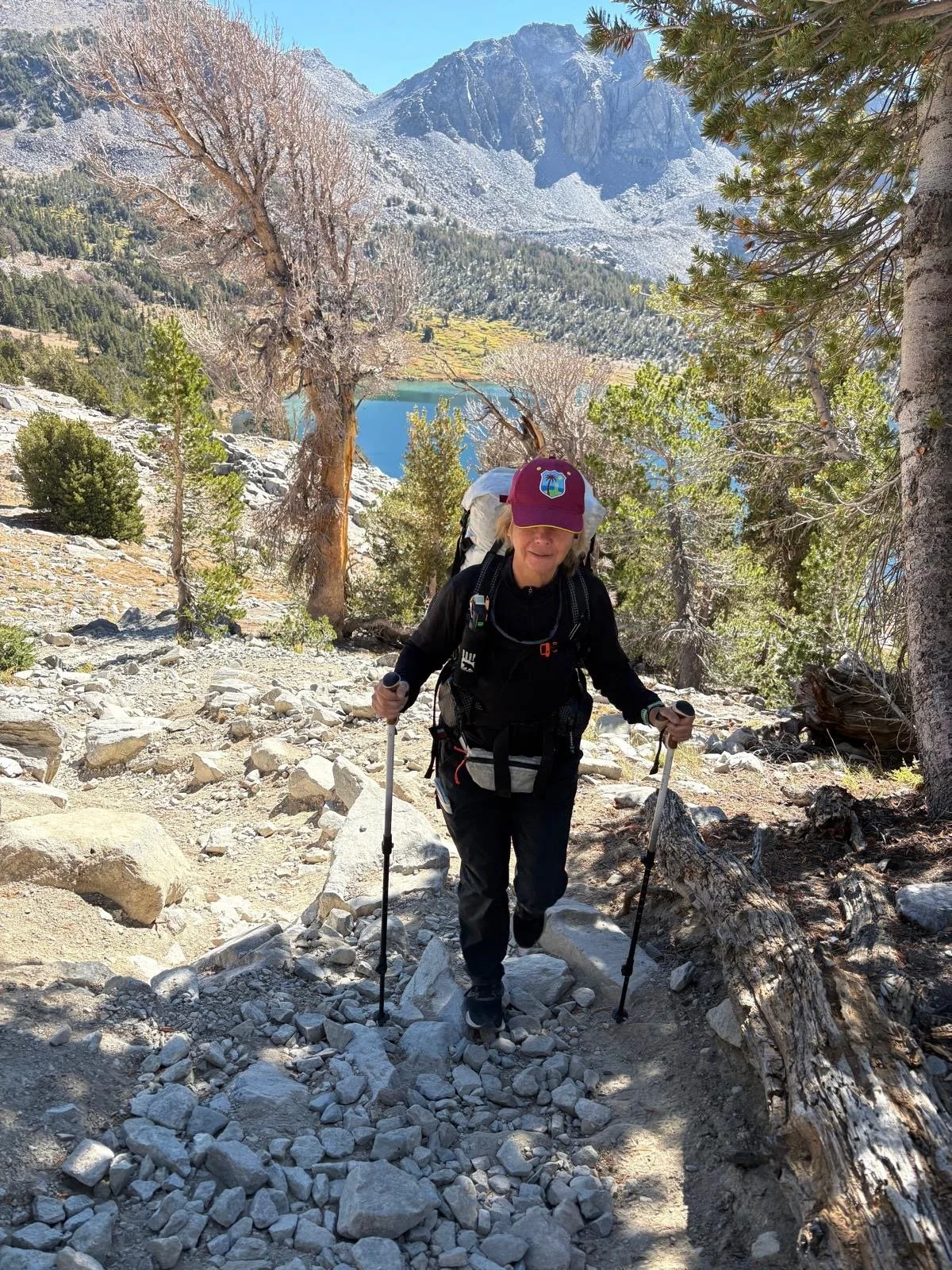Lessons From the Trail: What Hiking Reveals About My Art Practice
Recently, I found myself on an arduous hike (not my happy place, let’s be honest). But as I endured the steep climbs and rugged terrain, I couldn’t help but notice how similar that experience felt to my art practice. I know, it’s a stretch but trust me, there are surprising parallels.
The Known and Unknowns.
Before setting off on my hike (my first of the year at altitude), I knew the basics:
The distance.
The estimated time it would take to complete.
The destination, roughly what I anticipated the area to look like.
But what I didn’t know was:
How the environment would impact my pace and slow me down.
What strategies to engage, to stay energised and reach my destination.
How my imagined final overnight campsite would compare to reality.
Sound familiar? That is because my art practice follows a similar start point and understanding.
When I start a piece, I know the plan (or think I do!).
Its not always easy to reach your destination
The subject and composition
The size of canvas, and therefore, the amount of time it will take.
The process laid out and what the final piece will look like.
The Unknown
· My process takes longer to capture the emotion I am trying to nail.
The strategies I need to engage, to obtain my end.
The final piece never looks quite as I anticipated at the start of the process.
Sounds easy, right? But to get to that point where I love what I create (the colours, the marks, the feeling), it often involves an unexpected journey. Recently, I was working on a large piece of three dancers moving to the music. I knew exactly what I wanted express. I knew the canvas size and how long it should take. I was happy with the process of layering collage, pen, pastel, and paint. It took longer than expected to capture the energy and emotion I wanted to see. I had to test new ideas, remain open to change and eventually, I hit that sweet spot. The result was better than I imagined because of the dance I did to get there.
Paint, Collage, pen, drips and many strategies to keep on track!
Meditation and Flow
When the going got tough, I focused on one step at a time and I enter a meditative rhythm. What does that mean to me?
· Time disappears.
· I travelled farther and over steeper terrain than I remembered.
It was only on the return journey that I really saw the terrain that was covered the previous day “Did I really come up this way?” No way! I had no memory.
It is important not to check out completely. I had to snap back to awareness, now and then or risk wandering off the path and nobody wants that! “lions and tigers and bears ha ha”….
Painting is so similar. In my practice, I often hit what I call a flow state.
Time dissolves.
I react intuitively to my mark making with a brush, pen or collage.
The upside, like on the walk is that I make bold moves (or cover ground) that I don’t remember.
As with trekking, it is important to “come up for air.” If I don’t check in with the work periodically, I might push too far and lose my way. The key is knowing when to return to the present moment. More on that next.
Everyone Needs a Few Strategies Up Their Sleeve
When I know a hike is going to be tough, I plan for little joys:
Tea breaks. I love my cup of tea - hydration and a rest!
A yummy snack. Time for an energy boost.
A sit down to reset and get my head back into a positive place.
In my art, I do the same:
I take a break by setting a timer, usually for an hour – it helps to keep me present.
I work fast and loose, which creates a freshness.
I take a break and step back. So important to gain perspective.
I should stand back more often, and I am working on that but for now that timer is Queen
The Art of Knowing When to Walk Away
Here’s where hiking and art diverge:
On a hike, even if it’s brutal, I keep going. I know the destination is real, and it’s going to be worth it. The only time I would walk away is if I think it is dangerous in any way.
In painting? Sometimes the solution doesn’t come quickly and I have to walk away.
Turn the painting to face the wall.
Walk away and return another day/week/month.
Trust my intuition
Yeah, it sounds a little woo-woo, but that’s the truth. When I’ve forced a painting just to get it done, I’ve often ended up painting over it. But when I listen—really listen—I know what to do next and that’s the magic.
The Gear Changes as You Grow
As I get fitter and try more challenging hikes, I tweak the gear I bring for example:
The shoes I once loved may be too heavy or hot.
Hiking sticks might be too fiddly or awkward to alter.
My backpack is too heavy and I need an upgrade.
The same is true with my art materials. As I evolve, my gear, tools, and processes evolve too. I started in textile design, moved to using paint only and just a brush. Now I love to collage, use kitchen implements to make marks and basically push my boundaries. That’s growth.
Final Thoughts: Lessons Learnt
Whether I’m climbing a mountain or working through a painting, the lessons are the same:
Start with intention but stay open to change.
Embrace the unexpected detours.
Flow is magic, but presence is power.
Take breaks because they matter.
Know when to push and when to pause.
Trust yourself, you know what to do.

